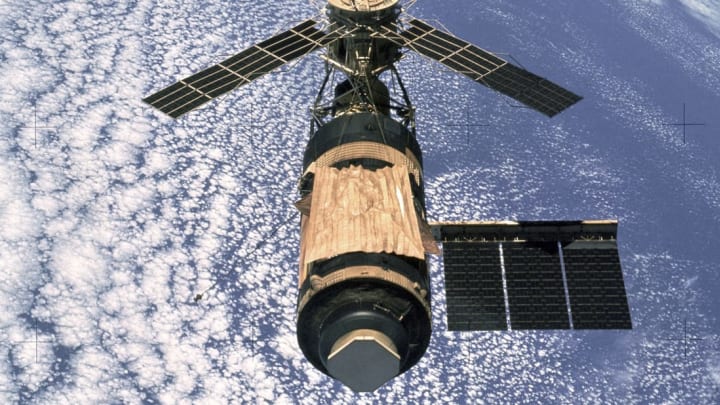On May 14, 1973, NASA launched Skylab, the first American space station. It fell to earth six years later, burning up in the atmosphere on July 11, 1979.
Skylab itself was a heavily modified third stage of a Saturn V rocket—the same system we used to send Apollo missions to the moon. The station was huge, measuring more than 80 feet in length, with a 21-foot diameter. During launch, Skylab 1 suffered major damage to its solar array, which delayed the launch of the Skylab 2 crew (originally intended to launch the day after Skylab itself reached orbit). The Skylab 2 mission was modified to include repair work to the solar power system and installation of a solar heat shield, as the original one was lost during launch. The Skylab 2 crew launched on May 25, 1973.
The Skylab missions resulted in new information about long-term space habitation (including an awesome space shower). The first crew spent 28 days in space; the second crew more than doubled that at 59 days; and the final crew (Skylab 4) spent 84 days up there. That last record was not broken by an American for two decades. Skylab also focused on solar science, Earth science, and microgravity experiments.
Skylab was something of a bridge between the Apollo and Space Shuttle programs. Indeed, Skylab was supposed to be serviced (and its orbit boosted) by the first Shuttle, but it wasn't ready in time. Skylab's orbit decayed, eventually causing it to disintegrate and fall to Earth over the Indian Ocean on July 11, 1979. Chunks of the station made a bit of a fireworks display streaking through the atmosphere, and ultimately littered a swath of Australia. No injuries were reported from the falling debris, though media coverage of the reentry was intense.
Here's a short NASA documentary on Skylab, explaining the story of the station. Have a look:
If you'd like to relive the launch, here's live TV coverage from that day:
And if you'd like to learn more about its crash, and what it taught NASA moving forward, watch this:
This story has been updated for 2020.
